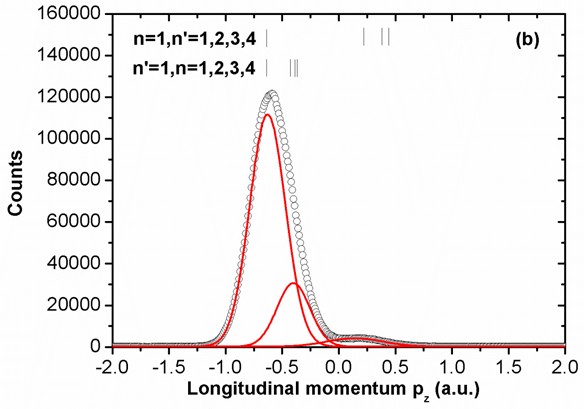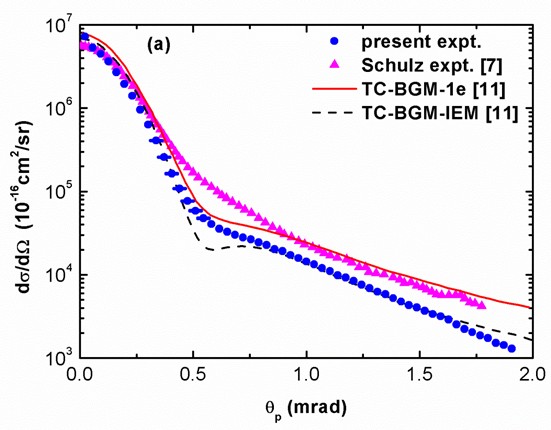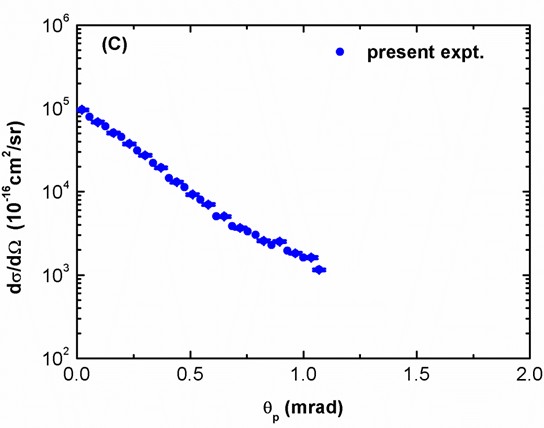State-selective electron capture cross sections and projectile scattering-angle differential cross sections for single-electron capture in collisions of protons with He at energies ranging from 50 to 100 keV have been experimentally investigated by means of a reaction microscope in Institute of Modern Physics, Chinese Academy of Sciences (IMP).
In the present experiment, events are recorded with double coincidence between recoil ion and scattered projectile. From the time of flight and the impact position on the detectors, all three components of the initial momentum vectors of the recoil ions can be reconstructed. It was found that for single electron capture the ground state transfer is the dominant reaction channel, and excited states transfer has relative small contributions to the cross sections. Transfer excitation process has a minor contribution to the total cross sections (Fig. 1).
The projectile scattering angle is related to the recoil-ion transverse momentum. From the angular-differential cross sections for the single transfer process, it was found that the momentum transfer mediated by the electron is dominant because of the large contributions of small-angle scatterings, while the nucleus-nucleus interaction has a minor contribution (Fig. 2). Compared to the single transfer process, the transfer excitation process is more likely to take place at small impact parameters, which implies that the nucleus-nucleus interaction is more important in this process (Fig. 3). A comparison between the present experimental results and the theoretical calculations within the independent electron model reveals that the electron-electron correlation effects, which are negligible in the single transfer process, manifest their importance in the transfer excitation process.
The results have been published in Physical Review A. 86. 052707 (2012).
The article can be linked as follows:http://pra.aps.org/abstract/PRA/v86/i5/e052707

Fig. 1 Recoil-ion longitudinal momentum distributions for single electron capture from He in collision with proton at 75 keV. Open circles: present measurements. Solid lines: Gaussian fittings.(Imaged by IMP)

Fig. 2 Angular differential cross sections for single-transfer process as a function of laboratory scattering angle for 50 keV p-He collisions. (Imaged by IMP)

Fig. 3 Angular differential cross sections for transfer-excitation process as a function of laboratory scattering angle for 100 keV p-He collisions.(Imaged by IMP)

